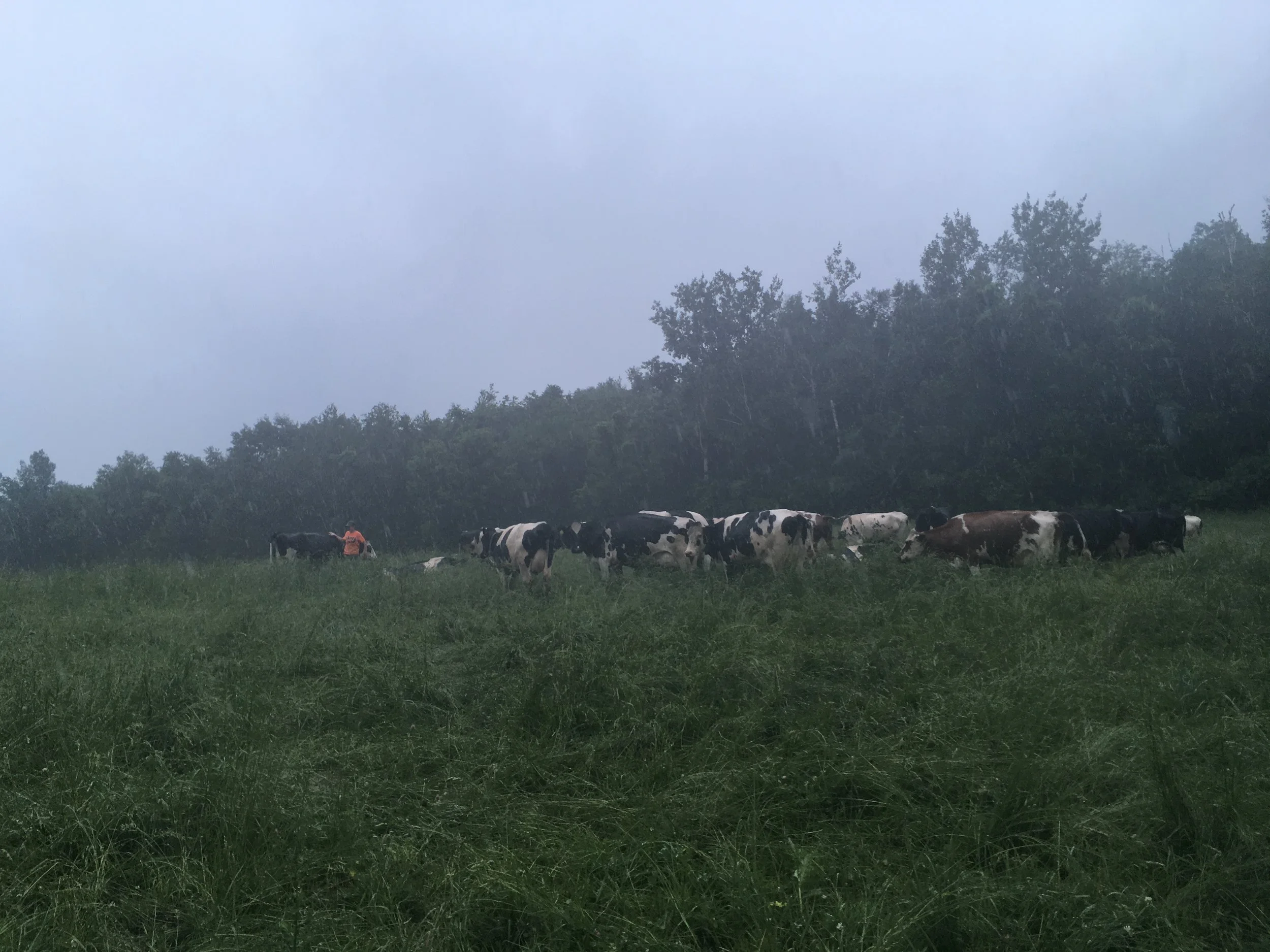Day 4: Sedimentary Evidence, Soil Health, and Sand Mining
Lake Pepin: Historical Record Keeper of Farm Practices Past
As settlers moved across America, cutting down forests and draining wetlands, soil suddenly became a major ingredient of surface water runoff into lakes and rivers. Lake Pepin, one of the world’s only natural lakes right in the middle of a major river, has borne witness to it all. In its mucky depths is buried the record of this history. We stopped for a lakeside chat about the science of sediment coring, how what happens on the farm often ends up in the lake and what this unique water body tells us about bigger-picture trends.
Building Soil Health and Reducing Runoff
Sedimentation isn’t only a concern of water researchers – in fact, it’s high on the mind of many Minnesota farmers. We visited two farms in southeastern Minnesota that are vastly different in scale, but similar in concerns for minimizing their lands’ contribution to the Mississippi’s runoff problem. At Duane and Susie Hager’s place in Kellogg, we heard the philosophy that led them to minimize fertilizers and embrace soil health. Then at the Daley Farm of Lewiston, we saw how an operation with 1,500 dairy cows and nearly 4,000 acres of crop and pasture utilizes cover crops, water reuse systems and more to reduce their impact on the nearby Whitewater and Root River watersheds.
A Tale of Two States: Sand Mining in Minnesota and Wisconsin
The boom in domestic production of oil and gas has generated a secondary boom in the mining of “frac” sand as mine companies seek out silica sand deposits with the perfect size and structure for propping open fissures in shale after it’s been hydraulically fracked. Like any extractive industry, frac sand mining has both economic benefits and environmental impacts. We first gathered at Farmer’s Park outside Lewiston, Minnesota to hear from citizens in Winona County who organized for and successfully passed the state’s first county-wide ban on frac sand mining. That decision was recently upheld in district court and is now being appealed by the company that owns mineral rights in Winona County, Minnesota Sands.
Then we headed to Wisconsin, where the sand mining boom is in full swing and embraced by many as a driver of economic activity. However, a recent bulldozer accident at the Hi-Crush mine near Whitehall led to the draining of a retention pond, which released 10 million gallons of wastewater into the Trempealeau River, a tributary of the Mississippi. We got a bus-window tour of Wisconsin’s sand mine landscape, as well as a working mine.
























